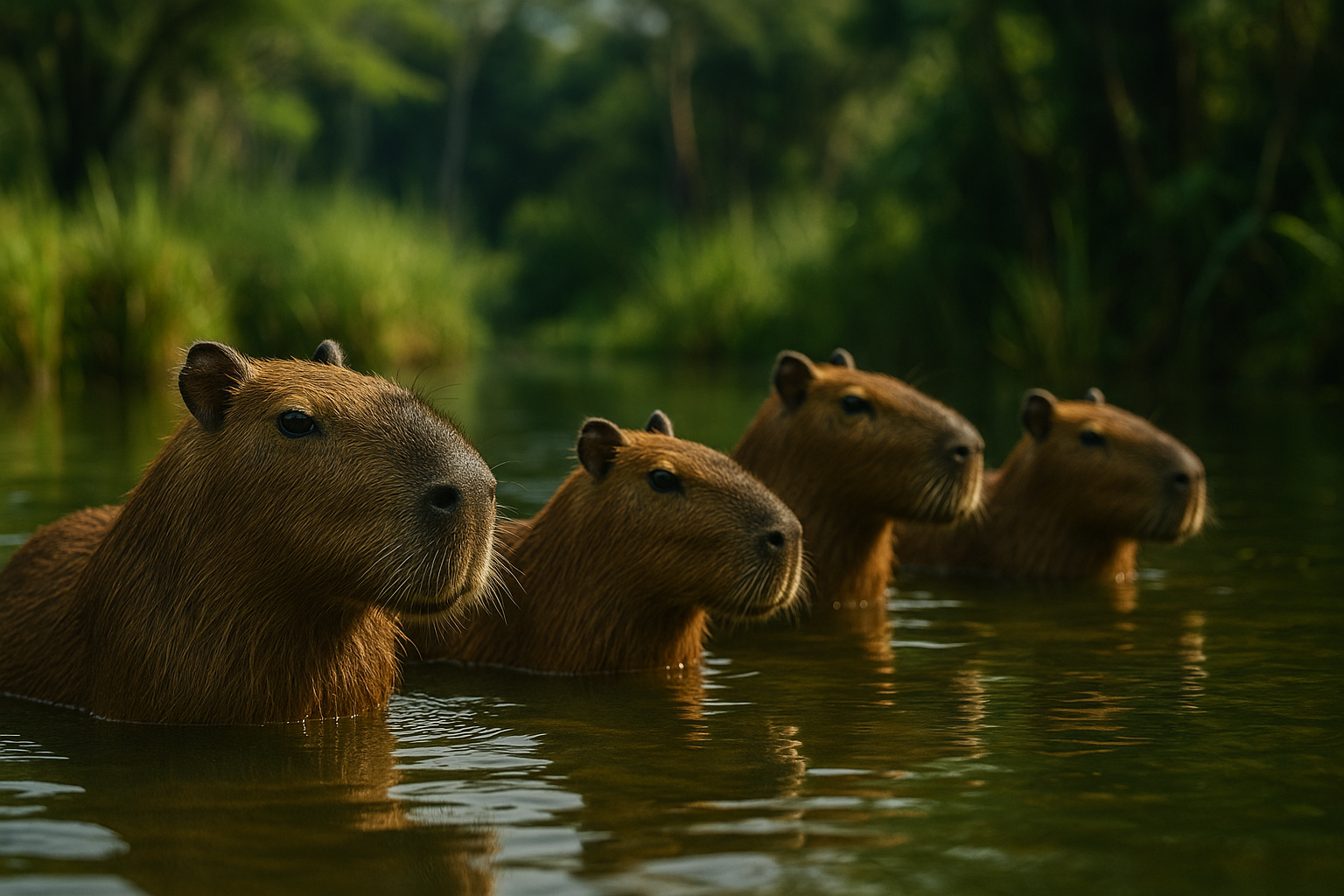Captivating World of Capybaras: The Gentle Giants of South America
Delving into the captivating world of capybaras, the article explores their fascinating lifestyle, unique attributes, and their enduring popularity as unconventional pets. As the world's largest rodent, capybaras have gained a significant fan base, not just for their size, but for their gentle, affable nature.

The Enchanting Capybara: An Overview
Often referred to as the “gentle giants” of South America, capybaras are indeed the world’s largest rodents. Native to the grasslands and wetlands of South America, these semi-aquatic creatures have adapted perfectly to their environment and lifestyle. They have webbed feet for swimming and a flattened body structure that aids in quick movement through dense vegetation.
Capybaras in Contemporary Culture
The capybara’s rise in popularity, particularly as exotic pets, is a relatively recent phenomenon. In Japan, they’ve gained a sort of ‘cult status’ with capybara-themed cafes and hot springs attracting tourists and locals alike. In the United States, while it’s not a mainstream trend, there’s a growing interest in owning capybaras as pets. However, it’s essential to remember that these are wild animals and require specialized care, far different from traditional pets like cats or dogs.
The Price and Impact of Capybara Ownership
Owning a capybara can be an expensive affair. The estimated initial cost of a capybara can range from $500 to $1500, depending on the breeder and the age of the animal. Additionally, the cost for housing, feeding, and veterinary care can add up, making it a significant investment. The growing interest in capybaras as pets has also spurred discussions on ethical pet ownership, wildlife conservation, and the potential impact on their natural habitats.
Debunking Capybara Myths: Facts Vs. Fiction
While capybaras are generally known for their docile and friendly demeanor, it’s crucial to bust some common myths associated with them. For instance, capybaras are not inherently domestic animals and can display aggressive behavior if not appropriately cared for. They are social animals and thrive best in the company of their own species.
The Capybara Conundrum
The growing fascination with capybaras presents a paradox. On one hand, it has brought attention to this unique creature and instigated conversations on conservation. On the other hand, the trend of owning capybaras as pets has raised questions about the ethics of keeping wild animals in domestic settings. As we continue to navigate our relationship with capybaras, it’s crucial that we prioritize their well-being and preservation of their natural habitats.




